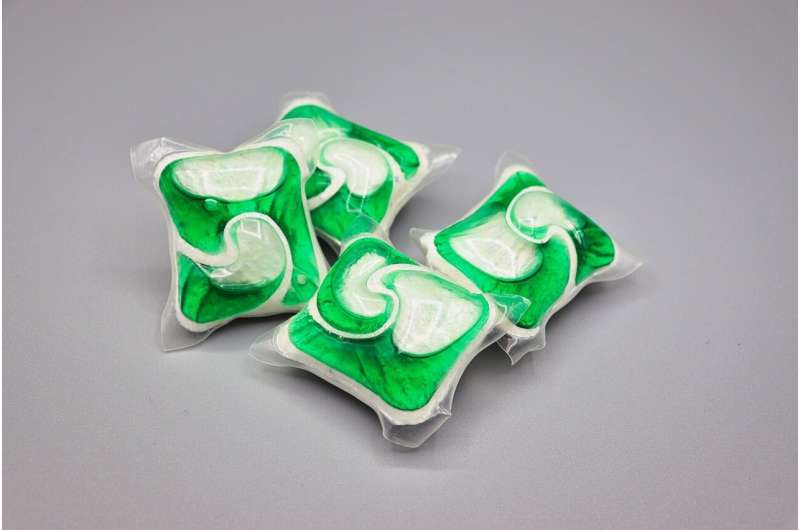This article has been reviewed according to Science X's editorial process and policies. Editors have highlighted the following attributes while ensuring the content's credibility:
fact-checked
peer-reviewed publication
trusted source
proofread
Does naming a behavior encourage people to do it? A new study says yes

Researchers from Zeppelin University, University of Cologne, and UNSW Sydney have published a new study that explores marketing uses for "behavioral labeling," or giving behaviors specific names or tags to encourage people to adopt those behaviors.
The study, forthcoming in the Journal of Marketing, is titled "Behavioral Labeling: Prompting Consumer Behavior Through Activity Tags" and is authored by Martin P. Fritze, Franziska Völckner, and Valentyna Melnyk.
The term "plogging" is a combination of the Swedish verbs plocka upp (pick up) and jogga (jog), and it refers to the activity of picking up trash while jogging to reduce litter. According to Wikipedia, plogging started as an organized activity in Sweden around 2016 and spread to other countries following increased concern about plastic pollution. An estimated two million people plog daily in over 100 countries and some plogging events have attracted over three million participants.
Linguistic relativity theory shows that language is not just an expression of thought—it also channels how people think and act. Marketing literature suggests consumers adjust their behaviors in response to words that evoke certain images, such as brand and company labels. This new study finds that naming or tagging an activity with a special word can make people want to do that activity, which the researchers call "behavioral labeling."
The study shows that labels can encourage people do all sorts of different things, even if the connection between the label and the action seems random. This happens because when we give something a name, it can create pictures in our minds of what we are talking about.
As Fritze explains, "behavioral labels help to connect different behavioral sequences through a semantic frame. Consequently, behavioral labels provide guidance and make it more likely that people will actually do the corresponding behavior."
In five different studies measuring actual behaviors, the study shows that labels can encourage positive new behaviors and discourage negative existing ones. Creating mental pictures in people's minds might be why this works, but more research is needed to fully understand the connection.
Behavioral labeling as a marketing advantage
Understanding the behavioral labeling phenomenon and its related effects offers marketers an alternative and complementary perspective on branding in general and a fresh way of designing advertising campaigns for products and services that revolve around a specific behavior or novel types of required actions. For example, Ariel, a P&G brand, introduced its "All-in-1 PODS" laundry detergent where a single "pod" can be dropped into the washing machine before clothes are added. To market the product, Ariel introduced the verb "to pod" (or "podding"), representing a behavioral label, to encourage the behavior of using Ariel pods.
Using a behavioral label can create a commercial advantage for one brand compared to a competitor that does not use a behavioral label, as the following example shows. The study analyzes Google Trends data for two comparable grocery delivery services, "Flink" and "Gorillas," which entered the German market around the same time. Both had nearly identical offerings and advertised delivering groceries at retail prices within 10 minutes of ordering. However, after a certain time, Flink started to communicate a behavioral label translated as "Flinking" (or expressed as "Flink it!") while Gorillas did not introduce any behavioral label. Results showed that Flink had more Google search inquiries than Gorillas after the behavioral label was launched.
A chance to change public behavior
"Public policymakers can use behavioral labels to promote certain behaviors to enhance sustainability, prosocial goals, or consumer well-being and safety," says Völckner.
For example, "Bob" is a word the Belgium Road Safety Institute used to describe a designated non-drinking driver. Anecdotal evidence suggests the campaign was effective in changing consumers' attitudes and reducing drunk driving. The European Commission funded the campaign in other European Union countries, and the word "Bob" has been added to the Dutch and Flemish dictionaries. The verb "bobben" (or "to bob," in English) describes the act of appointing someone or volunteering as a designated sober driver.
We find that behavioral labels like "up-smiling" (cheering others up by using encouraging smiley faces in online chats) can induce more supportive and constructive behavior in online classrooms, consumer discussion groups, or forums. "Lidcotting" (boycotting lids from takeaway cups) has the potential to reduce the use of single-use plastics, which has a positive environmental impact by reducing waste.
Relatedly, behavioral labels like "trollspotting" (spotting online "trolls" and ignoring their reviews) may help consumers become more resistant towards information coming from internet trolls. At a more general level, such labels may have a potential to break a "negativity spiral" on social media and contribute to making the online world a better place.
Melnyk says that "while we introduce 'behavioral labeling' and provide initial evidence for the effectiveness of behavioral labeling, we have only just begun to scratch the surface of this interesting new area. We hope that our findings spark additional research and new marketing practices in this intriguing domain."
More information: Martin P. Fritze et al, EXPRESS: Behavioral Labeling: Prompting Consumer Behavior through Activity Tags, Journal of Marketing (2023). DOI: 10.1177/00222429231213011
Journal information: Journal of Marketing
Provided by American Marketing Association





















